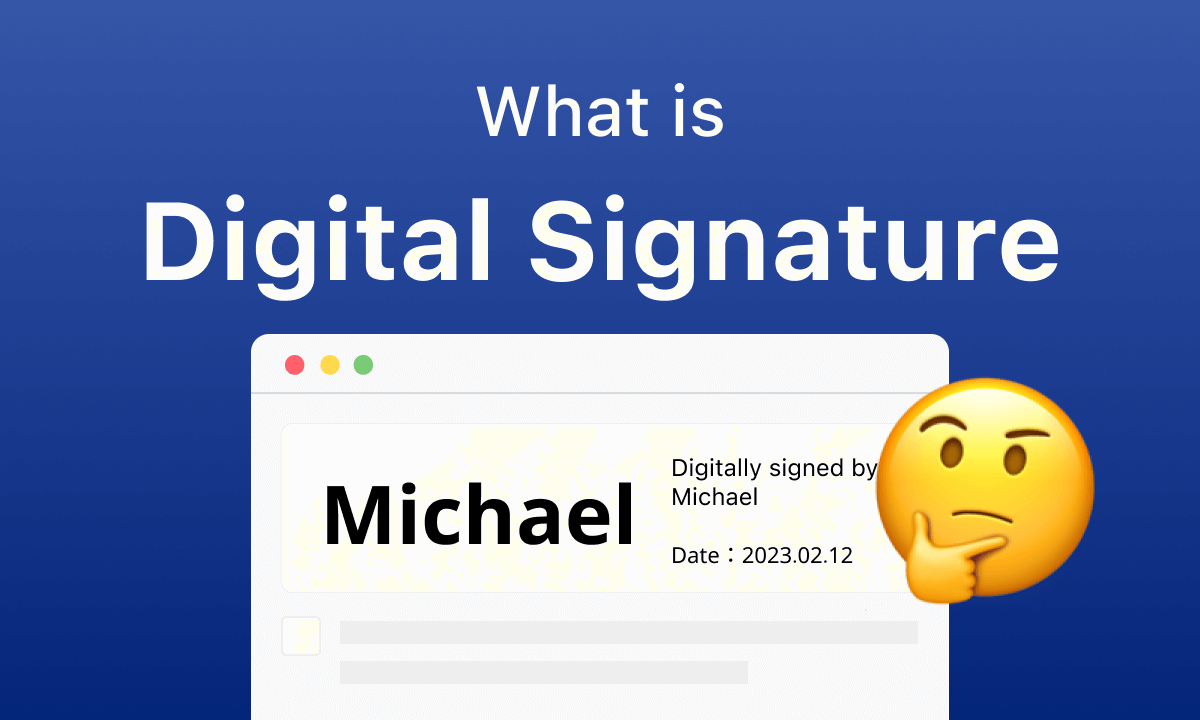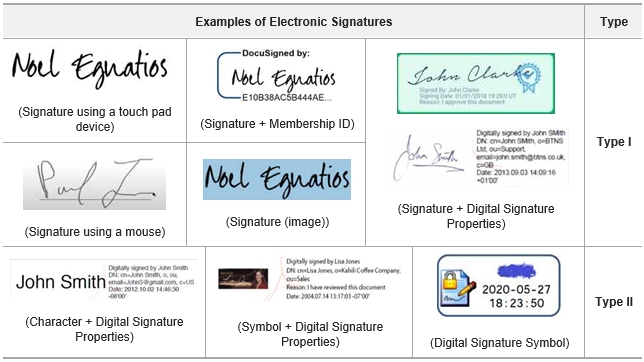What is Digital Signature and How it Works
Summary :
The benefits of digital signatures are obvious. It can not only save costs and speed up work efficiency, but also improve document security. However, many people are still unfamiliar with digital signatures. It doesn’t matter, please read this post, we will show you what a digital signature is and how it works.
Content Table
-
The Overview of Digital Signature
-
Related Terms
-
How Digital Signature Works

What is Digital Signature
With the rapid popularity of digital signatures around the world, you may be curious about it. Digital signatures are different from electronic signatures, so what is a digital signature? What are its characteristics? How does it work?
If you want to learn more about digital signatures, you are in the right place. This post will give you an in-depth introduction to digital signatures and answer your questions. Now let’s begin!
⭐ Learn More on PDF Signatures
✔ How to Sign on PDF on iPhone Simply
✔ What are Electronic Signatures and How to Use
The Overview of Digital Signature
What’s a Digital Signature
Digital signature is one of the electronic signature technologies, and it is also the most mature and widely used electronic signature technology in the world. A digital signature is a digital string, it can only be created by the sender of information and can not be forged by others. It is equivalent to a digital fingerprint. And this digital string is also significant proof of the authenticity of the information of the sender.
Also, here is a video tutorial that can help you understand the whole post easily.
The digital signature can ensure compliance with laws and regulations by providing the validity and authenticity of digital documents and the identity of signers. It can also not only prove that the data is from the signer by providing the source, time, identity, and certificate of the digital document but also confirm it has not been tampered with.
Why are Digital Signatures Have High Security
Digital signature adopts public key encryption technology. Public key encryption refers to the encryption method of the system using the key, and there are two kinds of keys. The key of public key encrypts the data, while the private key is used to decrypt the data and is only available to the signer. At the same time, both the signer and the receiver must have digital certificates provided by the certification authority (CA) to verify the whole process.
Therefore, the digital signature ensures its security through the above technology.
Why are Digital Signatures Important
Because of the popularity of the Internet, many businesses now choose to conduct their online. Among them, digital workflows occupy a very important position.
Compared with the paper process, a digital signature can be completed on any computer or mobile phone. This also allows people to track the status of documents anytime, anywhere. It does not require printing costs such as ink and paper, nor does it need transportation and archiving. A digital signature can achieve the purpose of work in a few minutes, saving a lot of time and cost.
At the same time, due to its strong security, the digital signature can help people to minimize the risk of information being stolen or tampered with when sharing important data. Also, with the wide application of electronic signature, digital signature has legal benefits in many countries, including the United States, Canada, and other European Union countries. Through the above two points, the digital signature improves the transparency of online interaction and establishes trust and legal relations among business partners.
These are why digital signatures are important.
Related Terms
Before knowing how digital signatures work, you should learn some related terms:
Hash Value
The hash value refers to the formation of a unique and fixed length number and letter string from a file of any size according to a certain algorithm (e.g. sha256 algorithm), which is similar to human fingerprints. Any file (e.g. e-mail, document, etc.) has only one hash value, and the hash values of different pdf files cannot be the same, and the contents of PDF files with the same hash value are definitely the same. The hash algorithm is irreversible, and the content of the file cannot be deduced from the hash value.
Public Key Cryptography
Public key cryptography, also known as asymmetric cryptography, uses two keys. The key of the public key encrypts the data, while the private key is used to decrypt the data and is only available to the signer.
Public Key Infrastructure (PKI)
PKI is composed of the certificate authority, certificate holder, and related party. It is a universal infrastructure based on public key cryptography, which provides comprehensive security services for various network applications.
Certificate Authority (CA)
CA is a trusted third party. It can make and issue digital certificates, generate a pair of passwords (private key and public key) by asymmetric encryption, and bind the real identity of the digital certificate holder.
Digital Certificates
The digital certificate is issued by CA, which can identify the holder, and contains the public key and other personal or organizational information.
Pretty Good Privacy (PGP)/OpenPGP
PGP enables users to sign certificates of people with verifiable identities to trust other users and is also regarded as an alternative to PKI.
Working Principle
The working principle of a digital signature is to prove that information or documents have not been tampered with after being signed by the signer.
Digital certificates issued by CA institutions are divided into public key certificates and private key certificates. When a document needs to be signed, the signer uses the private key certificate to encrypt the electronic file (file hash value) to form an electronic signature. The CA will hash the contents of the user certificate, and then use its private key to asymmetrically encrypt the calculated digest.
The CA’s public key is opened, and the user can decrypt the original digest encrypted by the CA’s private key with the CA’s public key, and obtain the contents of the original user certificate. Then use the same hash algorithm to get a digest value.
Comparing the two digest values, it is consistent that the certificate can be trusted if it has not been tampered with, so as to ensure the validity and tamper-resistant of the certificate.
Digital Signatures Examples
The specific process is as follows, and we will use Bob and Alice to refer to two people’s names.
Step 1. Bob select or create a file to be digitally signed. And the computer of J will calculate the file content’s unique hash value. Then a digital signature will be created by encrypting this hash value with J’s private key.
Step 2. Bob sends the file to Alice through the platform, and Alice receives the original file and its digital signature. Then, Alice will decrypt the digital signature using the public key provided by Bob.
Step 3. If the public key cannot decrypt the signature, this will cause the signature to be authenticated as invalid. If the decrypted file hash value is consistent with the original hash value, it means that the file has not been tampered with.

Digital Signatures Examples
Conclusion
Digital signatures have many advantages. It can save time, reduce cost, and speed up work efficiency; It also has strong security and legal benefits. Nowadays, it is widely used in business, finance, and other fields.
Through this article, you can understand its definition and function. If you think this post is useful to you, please share it with other friends who want to know about digital signatures!
